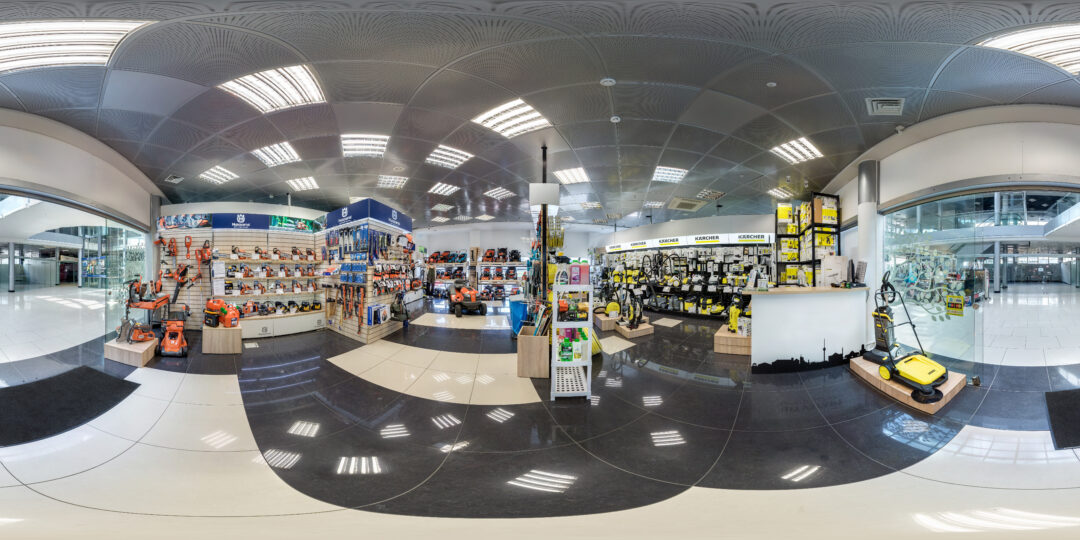Ben Wellman, brand program manager at OpSec Security, discusses what brands need to consider when it comes to retail in the metaverse
Few people would have heard of the word ‘metaverse’ until Mark Zuckerberg’s October 2021 announcement, but since then it has become a new buzzword, with expectations that it will have a profound effect on all areas of our lives, including our shopping habits.
The metaverse is a shared virtual 3D world or bunch of worlds, which are immersive, interactive and collaborative. In contrast to the regular internet, which is something you look at, with this version of the internet, you are inside it, where you experience it as a virtual version of yourself – basically as an avatar.
This exciting virtual world full of avatars can be used for practically anything, whether it’s hanging out with friends playing games, for work, enjoying a concert or shopping.
The hugely popular online social game Fortnite was quick grasp the potential of the metaverse, when in 2019, it launched a live concert within the game’s virtual space. Here, players were able to attend a live Marshmello concert, and a year later, rapper Travis Scott delivered a five-concert series, attracting nearly 50 million attendees.
Meanwhile, in an effort to build recognition, skateboarding brand Vans launched a virtual skatepark in Roblox that lets players try new tricks, earning points to redeem in a virtual store to customise their avatar. Vans described the metaverse as the best place to build brand awareness among their core demographic of 13 to 35-year-olds and that by the end of 2021, the online park had seen more than 48 million visitors.
How empowering your brand can power customer behaviour in the experience economy
Get ready to shop in the metaverse
The face of retail is everchanging, as we have seen with the rise of e-commerce and pop-up shops on social media. Now, there is an exciting opportunity for retailers to go to the next level and kickstart their move into VR, using the metaverse as a new and exciting platform to sell their goods in a virtual environment.
Retail in the metaverse will not be limited by channel, device or medium – it will be all around us, in a multi-layered, extended reality, in which the world becomes interactive, connected and shoppable. For example, can you imagine sitting inside Jaguar Land Rover’s latest electric car to see how it looks and feels, then a moment later attending an exclusive Valentino fashion show, before visiting Burberry’s store in Tokyo? Well, that is the future of retail, and it’s already happening now.
Jaguar Land Rover uses VR to let consumers virtually test-drive its Velar car. After the recent boom in fashion and virtual gaming platforms collaborating with each other, the industry has seen some of the world’s luxury labels introduce their designs digitally to gamers. Among them is Valentino, which has been working with Drest to host the world’s first luxury fashion game, which was launched in December 2021. Meanwhile, in 2021 British luxury fashion house Burberry created an interactive virtual replica of its flagship Ginza store. Visitors were able to navigate around the virtual store and purchase items from Burberry’s Spring/Summer 2021 collection by selecting digital icons.
This is the future of retail therapy, where the metaverse has the potential to bring a whole new meaning to the ‘virtual shopping’ experience and presents exciting opportunities for brands. Whereas bricks and mortar once defined how and where we shopped, the immersive worlds accessed through VR headsets in the comfort of our own homes will be limitless. Some even describe this as 360-degree retail, where storytelling and new forms of engagement will become normal.
Consumers and brands face new challenges
While the metaverse may be a golden ticket of new opportunities for retailers, there are very real security risks that also need to be considered. For example, in this new, yet to be explored metaverse, there’s the danger of consumers coming across a virtual man wearing a trench coat selling fake designer watches. How can consumers tell if he is selling the genuine article, or fakes? Ensuring your brand and products are protected in the metaverse is going to be a serious challenge.
Monitoring for intellectual property (IP) infringement across the various components of the metaverse will not be easy. If consumers have bad experiences in the metaverse, such as buying fake goods, this can cause great harm to their reputation online and in the real world too. This is why it is important that they take steps to protect their brand and IP as well as their customers. It has been suggested that operators within the metaverse should establish strategies for protecting users’ IP, in the same vein to how YouTube, eBay and Amazon work to protect rights holders from illicit activity on their platforms.
Retailers should work with expert partners and invest in technology that can help them detect counterfeit goods whether they are sold online or in the metaverse. By using tools such as AI monitoring software, brands will be able to identify if and where their products are being advertised at significantly lower prices. This should instantly prompt an alert so that they can take action by reporting illegitimate offers.
Brands should also adopt an effective QR strategy that allows consumers to track and trace every single step of the production process to the finished product. They can do this by accessing the brand’s website where they can authenticate the purchase and register it as well as seeing its lifecycle.
Finally, leveraging blockchain solutions can also help create a more transparent supply chain and reinforce consumer trust in the product being sold. Blockchains tell the story of where the products have been and how they have been produced, which will reassure the consumer that what they are buying is authentic.
While we are in the early stages of the metaverse, its evolution will no doubt pick up pace with the roll-out of 5G. Retailers and brands that are stuck in the real world and don’t embrace this new and exciting technology stand to be left behind. Equally, those who enter the metaverse will very much need to stay one step ahead of the cyber criminals.








